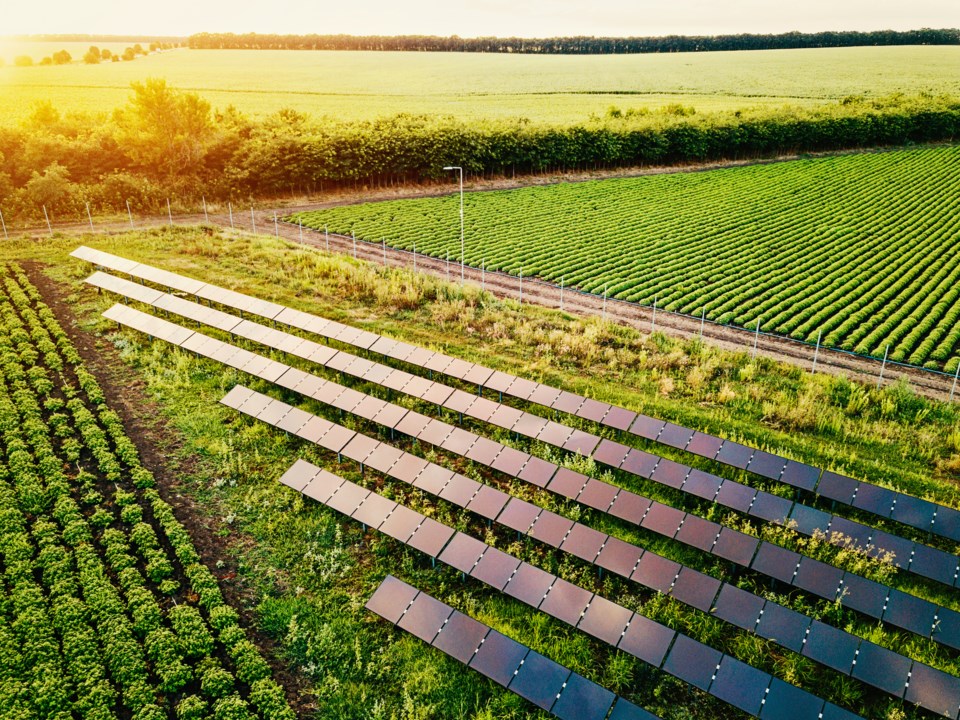A major issue facing solar energy development in sun-rich southern Alberta and Saskatchewan is criticism over taking agricultural land out of production.
New research into the field of agrovoltaics hopes to address the land-use conflict.
The concept aims to find the right balance between crops that can thrive under less sun, with solar systems that can allow for plant growth while fulfilling their primary goal.
Various research papers on agrovoltaics have shown yield increases for a large range of crops, including pasture grass, potatoes and wheat grown under solar arrays and increases in power production from the solar panels.
Guillermo Hernandez Ramirez, associate professor at University of Alberta’s faculty of agriculture, life and environmental science, said an initial study by one of his research students, Camila Quiroz, is promising.
Ramirez said the U of A study was conducted in a controlled grow chamber environment using spinach.
Ramirez said the spinach plants consumed less water.
“They were able to be more efficient in terms of using that water to grow,” he said. “When leaves aren’t fully exposed to sunlight, they don’t need to use that water to keep up functions, to keep photosynthesis going.”
The hope is to next take the research into the field to analyze the real-world effects of growing food under solar panels.
“With more population density around the world, I think using this space more efficiently can be a key for us to advance prosperity,” said Ramirez.
An analytical modelling study conducted by University of Western Ontario PhD student Uzair Jamil showed how Saskatchewan wheat fields and pastures would handle a dual land-use for energy and food production. It has shown potential for increases in both yields and power.
The model used data collected from studies in the United States and Europe, as well as solar irradiance levels in the southern portion of the province to determine the potential for using solar arrays inter-spaced between rows of wheat.
“Those studies showed you can get an additional three percent (yield) for wheat,” said Jamil. “For pasture, it was quite a lot. Almost 329 percent, which was observed.”
However, Jamil said those yield increases weren’t ubiquitous. Areas between solar arrays that received full sun and those kept in constant shade didn’t see those positive increases.
“But overall, if you consider the complete piece of land, there was a net increase,” he said.
The modelling study for Saskatchewan shows similar potential for increased yields.
But vegetable crops appear to have the largest potential for increased yields if grown under solar panels — particularly cherry tomatoes, lettuce and peppers.
The research is getting the attention of solar energy companies looking to address land-use conflicts, added Jamil.
“This technology is basically addressing this. The land-use conflict, the issue with food that we are facing, electricity production, climate change and greenhouse gases, that also gets addressed,” he said. “We’re basically battling a lot of issues all at once.”
Research on the benefits of having crops beneath solar arrays also shows they have a cooling effect. This effect is proving to come with a positive side-effect of increasing the efficiency of the photovoltaic process of turning solar energy into electricity.




